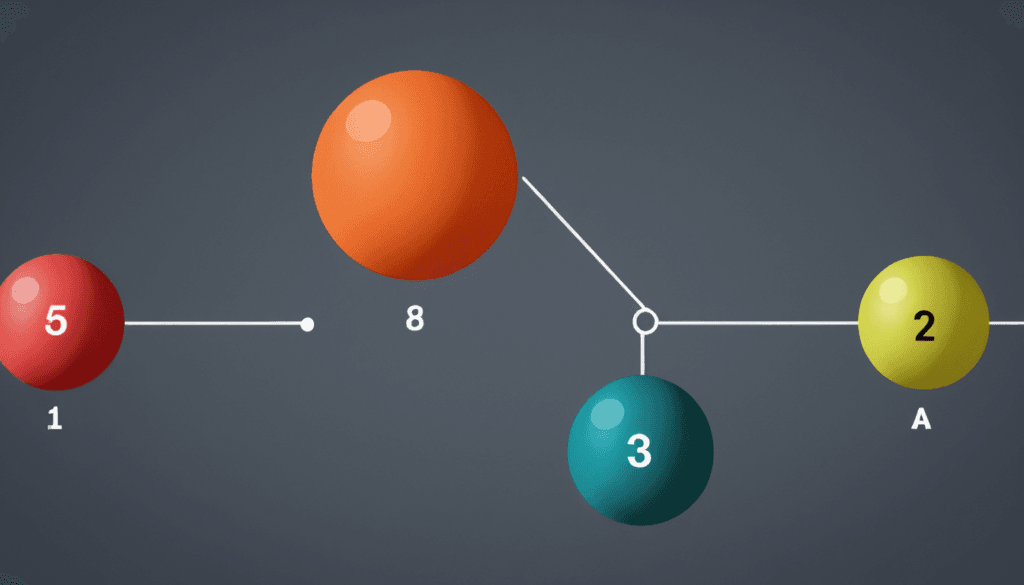Merge Sort is one of the most efficient and widely used sorting algorithms in computer science. It’s known for its consistent performance and ability to handle large datasets. But what exactly is Merge Sort, and how does it work? In this blog, we’ll break down the algorithm step by step, provide real-world examples, and compare it to other sorting methods like Bubble Sort and Quick Sort. By the end, you’ll have a solid understanding of Merge Sort and its applications.
What is Merge Sort?
Merge Sort is a divide-and-conquer algorithm that splits an array into smaller subarrays, sorts them, and then merges them back together. It’s a stable sorting algorithm, meaning it preserves the relative order of equal elements. This makes it ideal for sorting complex data structures where stability matters.
Unlike Bubble Sort or Insertion Sort, which have a time complexity of O(n²), Merge Sort operates in O(n log n) time. This makes it significantly faster for large datasets. However, it does require additional space, which is a trade-off for its efficiency.
How Does Merge Sort Work?
Merge Sort follows a simple yet powerful process:
- Divide: Split the array into two halves.
- Conquer: Recursively sort each half.
- Combine: Merge the sorted halves back together.
Let’s dive deeper into each step.
Step 1: Divide the Array
The first step is to divide the array into smaller subarrays. This is done recursively until each subarray contains only one element. For example, consider the array [38, 27, 43, 3, 9, 82, 10]. Here’s how it gets divided:
[38, 27, 43, 3, 9, 82, 10]
→ [38, 27, 43] and [3, 9, 82, 10]
→ [38], [27, 43], [3, 9], [82, 10]
→ [38], [27], [43], [3], [9], [82], [10]At this point, each subarray is trivially sorted because it contains only one element.
Step 2: Recursively Sort the Subarrays
Next, the algorithm sorts the subarrays by merging them back together in a sorted order. This is where the conquer phase begins. For example:
- Merge
[27]and[43]to get[27, 43]. - Merge
[3]and[9]to get[3, 9]. - Merge
[82]and[10]to get[10, 82].
This process continues until all subarrays are merged into a single sorted array.
Step 3: Merge the Sorted Subarrays
The final step is to combine the sorted subarrays. This is done by comparing elements from each subarray and placing them in the correct order. For example:
- Merge
[27, 43]and[38]to get[27, 38, 43]. - Merge
[3, 9]and[10, 82]to get[3, 9, 10, 82]. - Finally, merge
[27, 38, 43]and[3, 9, 10, 82]to get the fully sorted array[3, 9, 10, 27, 38, 43, 82].
Real-World Example
Imagine you’re a librarian tasked with sorting a catalog of books by their publication year. Using Merge Sort, you’d:
- Divide the catalog into smaller sections.
- Sort each section by publication year.
- Merge the sorted sections back together.
This approach ensures the catalog is organized efficiently, even if it contains thousands of books.
Advantages of Merge Sort
- Consistent Performance: Merge Sort has a time complexity of O(n log n) in all cases—best, average, and worst. This makes it reliable for large datasets.
- Stable Sorting: It preserves the order of equal elements, which is crucial for sorting complex data.
- Parallelizable: Merge Sort can be easily parallelized, making it suitable for multi-threaded environments.
Limitations of Merge Sort
- Space Complexity: Merge Sort requires additional space proportional to the input size (O(n)). This can be a drawback for memory-constrained systems.
- Slower for Small Datasets: For small datasets, simpler algorithms like Insertion Sort may perform better due to lower overhead.
Merge Sort vs. Other Sorting Algorithms
Let’s compare Merge Sort to other popular sorting algorithms:
- Merge Sort vs. Bubble Sort:
- Bubble Sort has a time complexity of O(n²), making it inefficient for large datasets. Merge Sort, with its O(n log n) complexity, is significantly faster.
- Bubble Sort is in-place (requires no extra space), while Merge Sort requires additional memory.
- Merge Sort vs. Quick Sort:
- Quick Sort also has a time complexity of O(n log n) on average but can degrade to O(n²) in the worst case. Merge Sort guarantees O(n log n) performance.
- Quick Sort is in-place, making it more memory-efficient than Merge Sort.
- Merge Sort vs. Heap Sort:
- Heap Sort has a time complexity of O(n log n) and is in-place, but it’s not stable. Merge Sort is stable but requires extra space.
Implementing Merge Sort in Python
Here’s a Python implementation of Merge Sort:
def merge_sort(arr):
if len(arr) > 1:
mid = len(arr) // 2
left_half = arr[:mid]
right_half = arr[mid:]
merge_sort(left_half)
merge_sort(right_half)
i = j = k = 0
while i < len(left_half) and j < len(right_half):
if left_half[i] < right_half[j]:
arr[k] = left_half[i]
i += 1
else:
arr[k] = right_half[j]
j += 1
k += 1
while i < len(left_half):
arr[k] = left_half[i]
i += 1
k += 1
while j < len(right_half):
arr[k] = right_half[j]
j += 1
k += 1
# Example usage
arr = [38, 27, 43, 3, 9, 82, 10]
merge_sort(arr)
print("Sorted array:", arr)Output:
Sorted array: [3, 9, 10, 27, 38, 43, 82]Common Questions About Merge Sort
- Is Merge Sort In-Place?
No, Merge Sort requires additional space proportional to the input size. - Why is Merge Sort O(n log n)?
The algorithm divides the array into halves (log n steps) and merges them in linear time (n steps). - Can Merge Sort Handle Duplicate Values?
Yes, Merge Sort is stable and preserves the order of duplicate elements.
Conclusion
Merge Sort is a powerful and efficient sorting algorithm that excels in handling large datasets. Its O(n log n) time complexity and stability make it a popular choice for many applications, from sorting library catalogs to organizing large databases. While it requires additional space, its consistent performance and parallelizability often outweigh this limitation.









